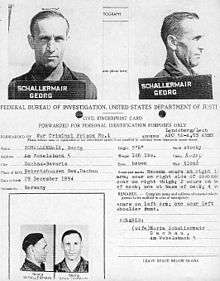Mühldorf subcamp


In mid-1944, the Schutzstaffel (the "SS") established at Mühldorf in Bavaria the Mühldorf camp complex, a satellite system of the Dachau concentration camp to provide labor for an underground installation for the production of the Messerschmitt 262 (Me-262), a jet fighter designed to challenge Allied air superiority over Germany.
Between July 1944 and April 1945, when the U.S. Army overran the area, more than 8,000 prisoners had been deported to the main camp at Mettenheim and to its subcamps.
As the Allied air offensive against Nazi Germany intensified after 1943, the Nazi leadership decided to construct underground installations in order to produce weaponry and related war material. Accelerated construction of such facilities required significant outlay of human resources. The SS provided concentration camp prisoners to carry out the most dangerous tasks, such as hollowing out tunnels from mountainsides and caves, constructing subterranean factories, and hauling construction materials. To facilitate these immense projects, it set up hundreds of satellite camps close to proposed industrial sites in 1944 and 1945.
According to the account of a prisoner who turned over the camp's administrative files to American authorities, the Mettenheim camp held some 2,000 inmates, a nearby women's camp 500 persons, the "forest camps" (Waldlager) about 2,250 male and female inmates, while two other camps held a total of 550 persons. Most of the prisoners were Hungarian Jews, but there were also Jews from Greece, France, Italy as well as political prisoners from Russia, Poland, Germany, and Serbia. The surrounding area also contained numerous forced-labor and prisoner-of-war camps to supply workers for the factory.
Conditions at the Mühldorf complex were dismal. As at the Kaufering camps, the SS guards carried out "selections" at the Mühldorf complex in the fall of 1944, deporting hundreds of sick and disabled inmates to the gas chambers at Auschwitz. It is estimated that more than half of the prisoners held there perished following their deportation to the Auschwitz-Birkenau killing center or died on site from overwork, abuse, shootings, and disease. Prisoners in the "forest camps V and VI" (Waldlager V and VI), located near the town of Ampfing, were housed in earthen huts, barracks partially submerged in the ground with soil-covered roofs designed to camouflage the structures from Allied aerial reconnaissance. Prisoners frequently worked 10- to 12-hour days hauling heavy bags of cement and carrying out other arduous construction tasks.
In late April, as the U.S. Army approached the camps, the SS guards evacuated some 3,600 prisoners from the camp on death marches.
See also
Notes
- This article incorporates text from the United States Holocaust Memorial Museum, and has been released under the GFDL.
External links
- Mühldorf: United States Holocaust Memorial Museum
- Website for the Society for Remembrance
- Website for the Mühldorf History workshop